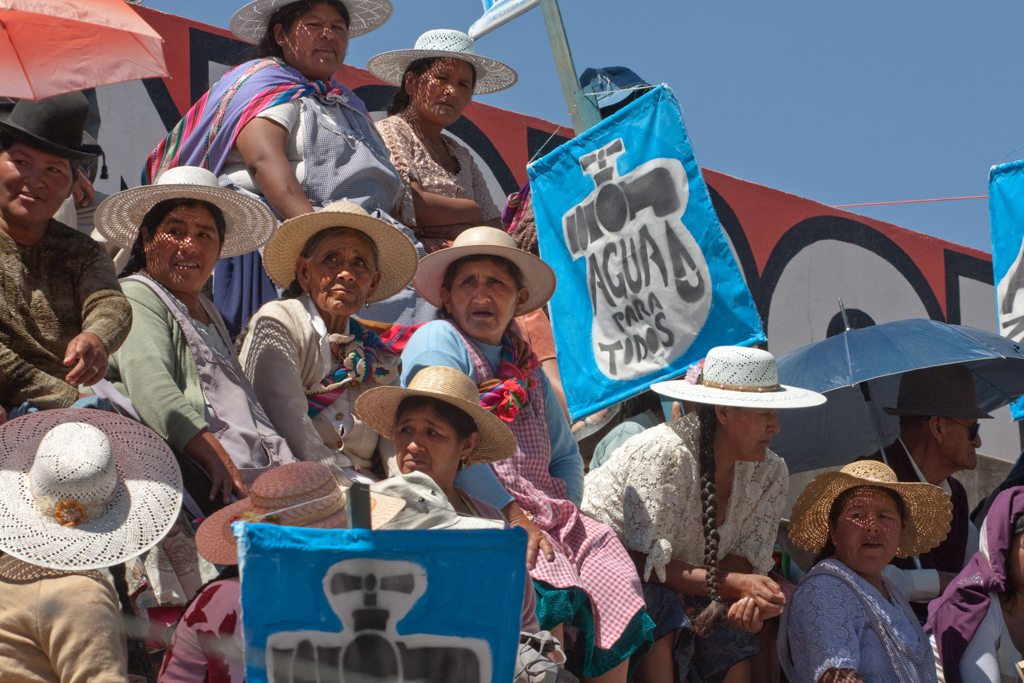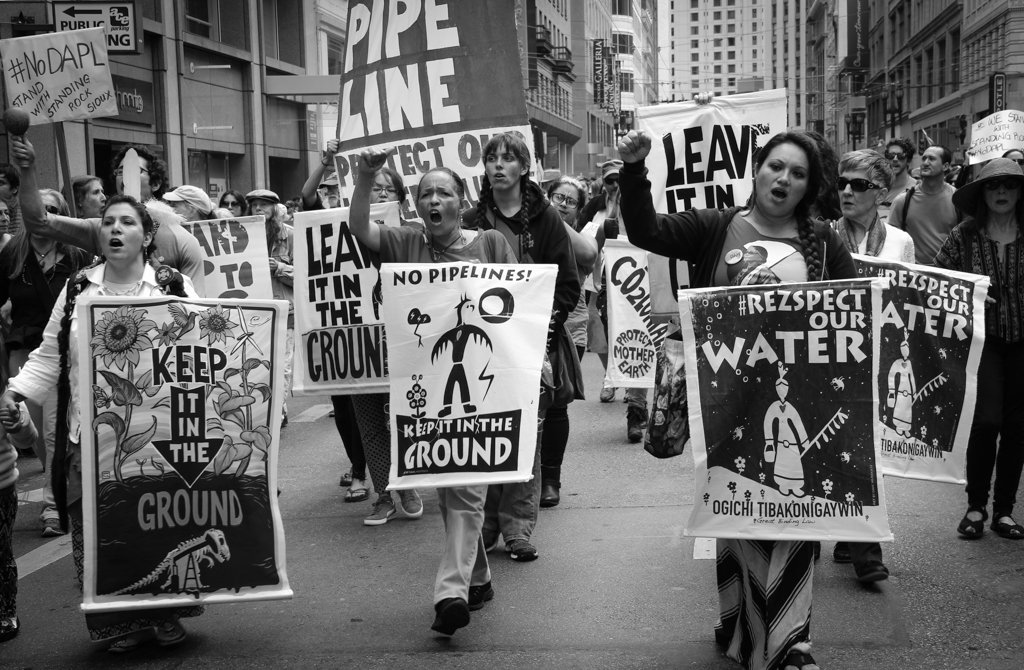Photo Essay – Water Is Life
Water for All
Cochabamba, Bolivia – April 2010
While celebrating the 10 year anniversary of their successful fight to stop the privatization of their water by Bechtel Corporation,
many in Cochabamba continue to struggle for access to water.
They ask how it can be fair for water to flow in public fountains in some neighborhoods
while others have no access at all.
The challenges are extreme for poor communities faced with regionally dwindling water sources.
Solutions are complicated by corruption, abuse and pressure from foreign sources
to adopt “water for profit” models of water management.
Rezpect Our Water
San Francisco, California – September 2016
In 2016 the Standing Rock Sioux Tribe of North Dakota stood their ground against the fossil fuel industry – the Black Snake – as foretold by the ancestors.
Thousands gathered where the pipes for the Dakota Access Pipeline (DAPL) lay waiting to cross under the Missouri River.
At stake… native sovereignty, sacred sites, the health of the water supply for the tribes and the millions living downstream, and the capacity to limit the devastating effects of climate change by keeping fossil fuels in the ground.
In San Francisco, native groups and environmental/climate justice groups rallied thousands in support of Standing Rock
– and challenged SF banks for their role in financing DAPL and other fossil fuel projects.
MNI WICHONI or Water is Life, became a rallying cry ringing thru the SF Financial District.
Water is Life
Sonoran Desert, Arizona
In January of 2008, seven miles above the Mexican border, 14 year old Josseline Jamileth Hernández Quinteros died.
5 feet tall and 100 lbs, Josseline had traveled over 2000 miles with her 10 year old brother from El Salvador to reunite with their mother in Los Angeles.
Crossing the desert with a group led by a “coyote” and 2 days from their destination, Josseline became very ill, likely from drinking bad water from a cattle trough.
Those unable to keep up with the fast moving groups are left behind.
Josseline’s body was discovered 3 weeks after she died alone in a remote canyon.
Those who found her were leaving gallon jugs of water, canned foods and dry socks along the migrant trails.
______



